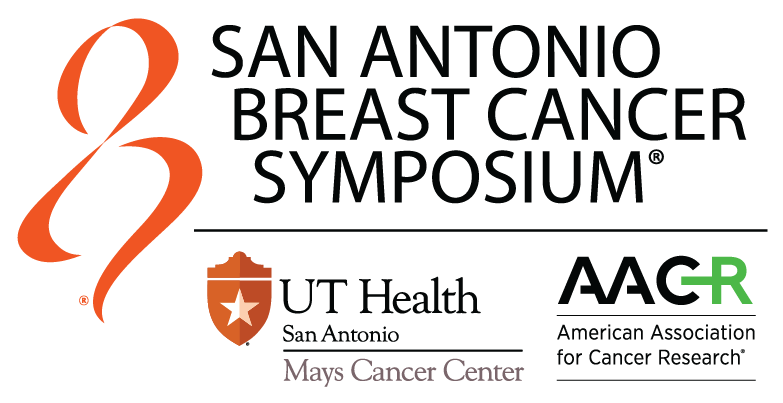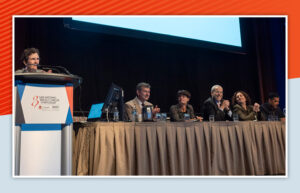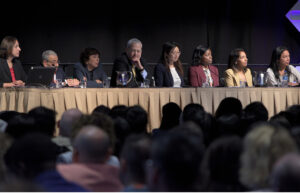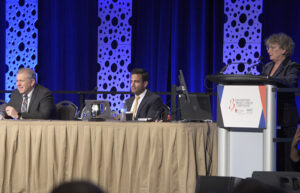
C. Kent Osborne, MD, was among the first clinician-investigators to recognize the importance of signaling between HER2 (human epidermal growth factor receptor 2) and ER (estrogen receptors). Those early findings continue to have dramatic scientific and clinical implications.
“The past 44 years have been an exciting time for breast cancer research, resulting in markedly improved outcomes for our patients,” said Dr. Osborne, Founding Director, Dan L. Duncan Comprehensive Cancer Center, Baylor College of Medicine. “It’s like night and day for those of us who were around back then compared to what we can do today.”
Appropriately, Dr. Osborne opened the C. Kent Osborne HER2 and ER Crosstalk: Signaling Mechanisms and Clinical Implications Symposium named in his honor on Wednesday. While the development of multiple agents targeting ER and HER2 have improved outcomes for many patients, many tumors are, or become, resistant to treatment due to crosstalk between these two pathways. Dr. Osborne suggested that optimal therapy may require blockade of both ER and HER receptors.
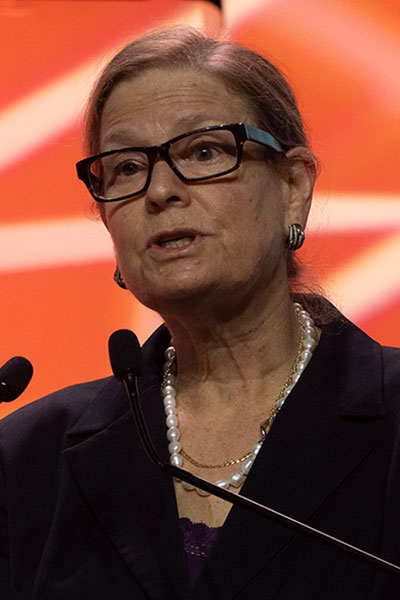
“Endocrine resistance is still an evolving field,” said Rachel Schiff, PhD, Professor of Medicine at the Dan L. Duncan Comprehensive Cancer Center. “ER plasticity is key and is one result of oncogenic signaling between ER, growth factor receptors (GFR), and ER co-regulators. Blocking one receptor enhances alternative survival signaling pathways and altered ER activity.”
Endocrine resistance can result from dysregulation of multiple GFR/cellular kinase pathways, Dr. Schiff noted, including HER1/2 pathways. ER blockade increases HER2 levels and HER2 blockade increases ER levels. Clinicians need to recheck HER2 and ER markers regularly and adjust therapy accordingly, she added.
“ER plasticity and endocrine resistance are multifaceted and context-specific,” she concluded,” which needs to be identified for precision therapeutic interventions. We need to identify additional convergent mechanisms to improve outcomes.”
Some of those mechanisms may reside in ER cistrone, the thousands of potential chromatin binding sites for ER.
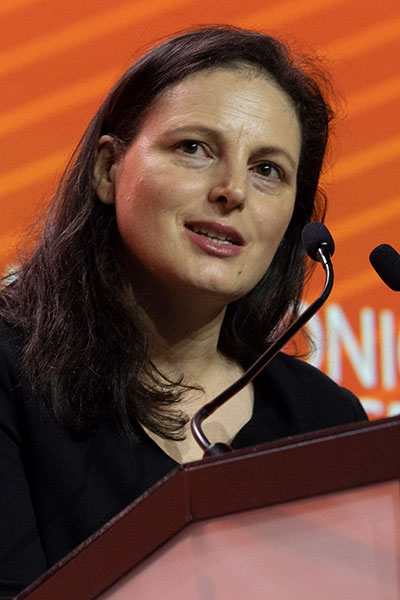
“Most ER binding occurs on openings in chromatin created by FOXA1,” said Rinath Jeselsohn, MD, Assistant Professor of Medicine at Harvard Medical School and of Medical Oncology at the Dana-Farber Cancer Institute. “The ER cistron is hugely dynamic and highly clinically relevant. We see divergent ER binding in different tissues, between normal breast tissue versus breast cancer, in ET-sensitive versus ET-resistant breast cancers, high-risk and metastatic versus low-risk breast cancers and invasive lobular versus invasive ductal breast cancers.”
Interactions between ER and other nuclear receptors and transcription factors can increase or decrease ER activity. Some interactions foster competitive DNA binding while others favor cooperative DNA binding. Some can squelch transcriptional activity and some can enhance transcription.
“Studies to investigate the effects of HER2 signaling on ER and the crosstalk between ER and HER2 are needed, especially in ER+/HER2-low tumors,” Dr. Jeselsohn said.
Growing understanding of HER2/ER crosstalk is creating new opportunities for targeted therapy combinations.

“It makes sense to treat with both HER2 and endocrine therapies,” said Stephen R.D. Johnston, MBBS, PhD, Head of Medical Oncology and Professor of Breast Cancer Medicine, The Royal Marsden Hospital, London, UK. “HER2+ tumors are less responsive to hormonal treatment in the absence of anti-HER2 therapy. “
The clinical effects of dual ER/HER2 blockade vary with tumor subtypes. HR+/HER2- tumors have a better prognosis than HR+/HER2+ tumors, which respond better than HR-/HER2+ and triple negative tumors.
CDK4/6 inhibitors have transformed cancer therapy in combination with hormonal therapy, Dr. Johnston noted. The next step, triple combinations of CDK4/6 inhibitors + anti-HER2 + ET agents, are being actively explored.
In metastatic ER+/HER2+ breast cancer, standard of care for most patients remains chemotherapy + dual HER2 antibodies with endocrine therapy added to trastuzumab or pertuzumab as maintenance. Antibody-drug conjugates are standard of care as second- or third-line therapy, but usually given without concurrent ET. Triple combinations without chemotherapy are also effective.
A growing body of evidence also suggests extending adjuvant HER2 treatment, at least in ER+/HER2+ disease, to improve patient outcomes.
“You have to be patient because response increases over time,” Dr. Johnston said addressing the neoadjuvant setting. “The correct combination of drugs and the correct duration of treatment can achieve pathologic complete response.”
On-Demand Session Availability
Daily sessions will be available for on-demand viewing 3-5 days following the 2022 Symposium (author permitting). They will be available exclusively to registered SABCS attendees until March 2023. Following March 2023, they will be available on SABCS.org under the “Resources” tab.
